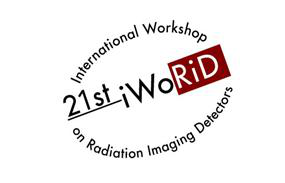Speaker
Description
Abstract
Contrast-enhanced dual-energy mammography (CEDM) is a promising approach for early breast cancer detection. In CEDM, two images could be acquired by using both double exposure with energy integration system or single exposure with energy resolved photon-counting (PC) system [1]. The PC systems are commonly consists of direct conversion X-ray sensors connected to application specific integrated circuits (ASICs). However, the direct conversion PC detector has some limitations such as charge-sharing loss and count rate saturation. In this work, we designed an indirect PC system to overcome these limitations. Using a Gd3Al2Ga3O12 (GAGG) crystal array to configure the scintillation pixels connected to silicon photomultipliers (SiPM), breast phantom images are obtained at single exposure scan. The pixelated scintillator array, X-ray source, and the breast phantom were simulated through Geant4 Application for Tomographic Emission (GATE) toolkit. The dimension of the GAGG scintillator is 100.0 mm x 100.0 mm x 2.0 mm, and the SiPM array has the dimensions of 100.0 mm x 100.0 mm. The 200 x 200 element GAGG array is used and the pixel size is 0.5 mm x 0.5 mm x 2.0 mm. The shape of the breast phantom is a semicylinder and it has a diameter of 80 mm, a radius of 40 mm, and a thickness of 40 mm. The breast phantom includes both the calcium disk and the iodine disk. The X-ray spectrum was generated by the SRS-78 code for the specifications of a rhodium (Rh) target, 30 kV tube voltages, and a Rh filter and was then simulated using GATE code. The performance of the PC system is tested by conventional energy subtraction and energy-weighting based energy subtraction. Figure 1 shows the dual-energy subtraction images for conventional energy subtraction, calcium weighted image, and iodine weighted image. Figure 2 is plotted for conventional energy subtraction, calcium weighted image, and iodine weighted image. The contrast-to-noise ratio (CNR) of the energy-weighted energy subtraction images was 2.84 and 2.39. There was a CNR improvement of 1.42% and 18.91% in the energy subtraction images based on energy-weighting.
Reference
[1] T.G. Schmidt, Optimal image-based weighting for energy-resolved CT, Med. Phys. 36, 3018-3027, 2009
